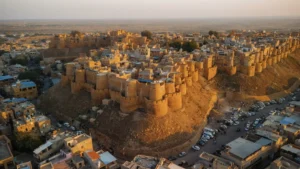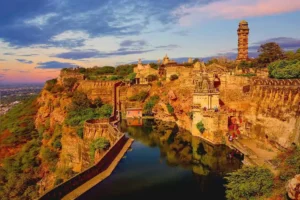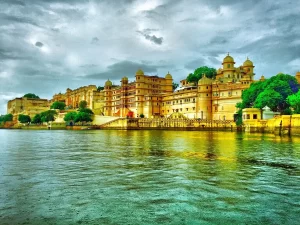The Amber Fort, also known as the Amer Fort, is one of the most iconic landmarks in Rajasthan, showcasing the grandeur of Rajputana architecture and history. Nestled on the rugged Aravalli Hills, overlooking Maota Lake, this majestic fort is a must-visit destination in Jaipur. Known for its artistic blend of Rajput and Mughal architecture, Amber Fort captivates visitors with its intricate carvings, sprawling courtyards, and breathtaking views.
History of Amber Fort Jaipur
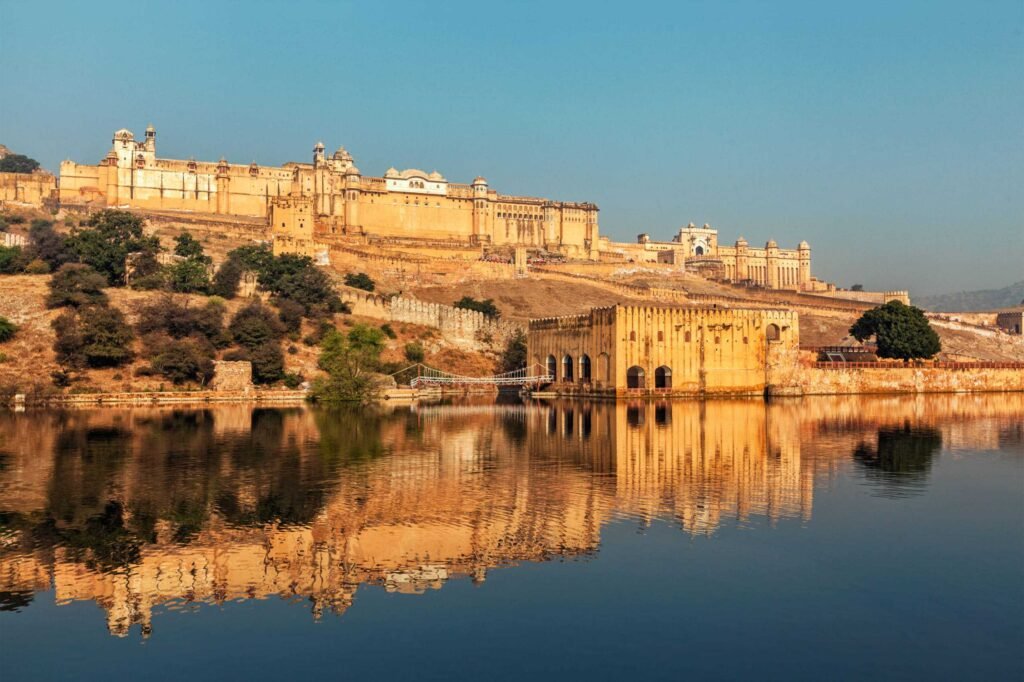
Amber Fort’s history dates back to 967 CE, with its foundation laid by the Meenas, the original rulers of the region. However, the fort gained prominence during the reign of the Kachwaha Rajputs, under the leadership of Raja Man Singh I, who began its construction in 1592. Subsequent rulers, including Jai Singh I, contributed to its development, adding palaces, temples, and gardens over time.
The fort served as the primary residence of the Kachwaha rulers until 1727, when the capital was shifted to Jaipur. The name “Amber” is derived from Amba, the goddess of the Meena tribe, whose temple resides within the fort complex. Amber Fort’s strategic location made it a vital military and political center during its peak.
How to Travel to Amber Fort Jaipur
Reaching Amber Fort is convenient due to its proximity to Jaipur, located just 11 km from the city center.
- By Air: Jaipur International Airport, approximately 25 km from the fort, is the nearest airport.
- By Train: Jaipur Railway Station is well-connected to major Indian cities and is about 13 km from the fort.
- By Road: Visitors can hire taxis, take local buses, or use ride-sharing apps to reach the fort.
- By Tuk-Tuk or Cab: Auto-rickshaws and cabs are economical options for a short ride to the fort.
For an authentic experience, you can also opt for an elephant ride up to the fort’s entrance, though it is subject to ethical and environmental concerns.
Major Tourist Attractions for Amber Fort Sightseeing
Amber Fort offers a wealth of attractions that reflect its historical and architectural brilliance:
1. Diwan-i-Aam (Hall of Public Audience): Amber Fort is a grand open-air hall where the king addressed the grievances of his subjects. Supported by intricately carved arches and pillars, the hall is a prime example of Rajput and Mughal architectural fusion. It served as a symbol of justice and accessibility, showcasing the king’s role as a fair ruler. The hall’s central platform, flanked by decorative details, made it a space for significant administrative and ceremonial gatherings.
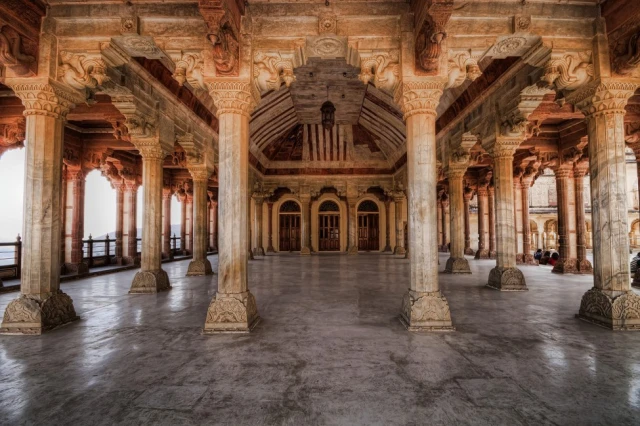
2. Diwan-i-Khas (Hall of Private Audience): Amber Fort was a regal chamber where the king held confidential discussions with his ministers and important dignitaries. Known for its opulent design, the hall features intricate carvings and elaborate mirror work that highlight the grandeur of Rajput and Mughal artistry. The space provided a secluded yet majestic setting for strategic planning and state affairs, ensuring privacy while reflecting the power and sophistication of the royal court.
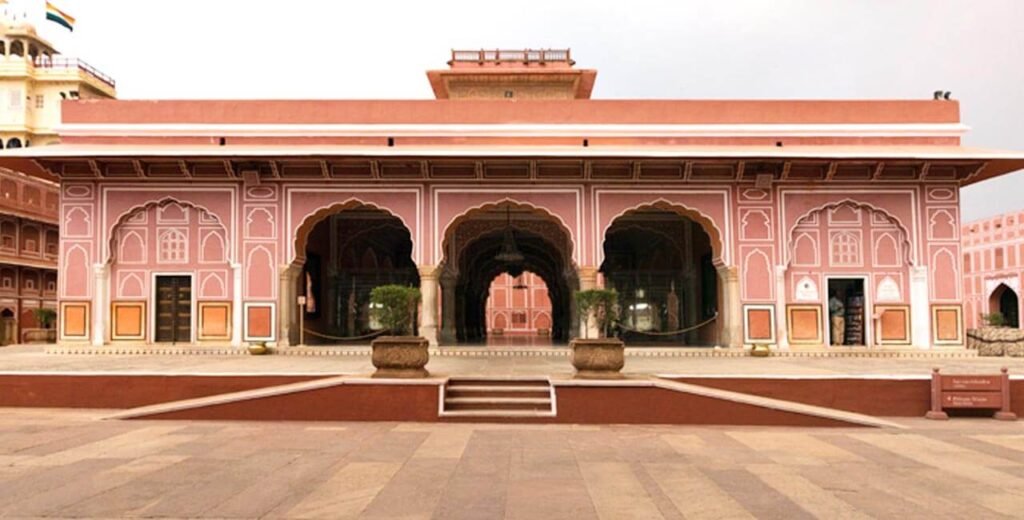
3. Sheesh Mahal (Mirror Palace): The Sheesh Mahal (Mirror Palace), located within Amber Fort, is a dazzling masterpiece of craftsmanship. Known for its intricate mosaic work, the walls and ceilings are adorned with tiny mirrors that reflect even the smallest light, creating a mesmerizing effect. Designed as a private retreat for the royal family, it showcases the exquisite fusion of Mughal and Rajput artistry. The palace’s shimmering interiors once provided warmth by reflecting candlelight, symbolizing luxury and innovation in architectural design.
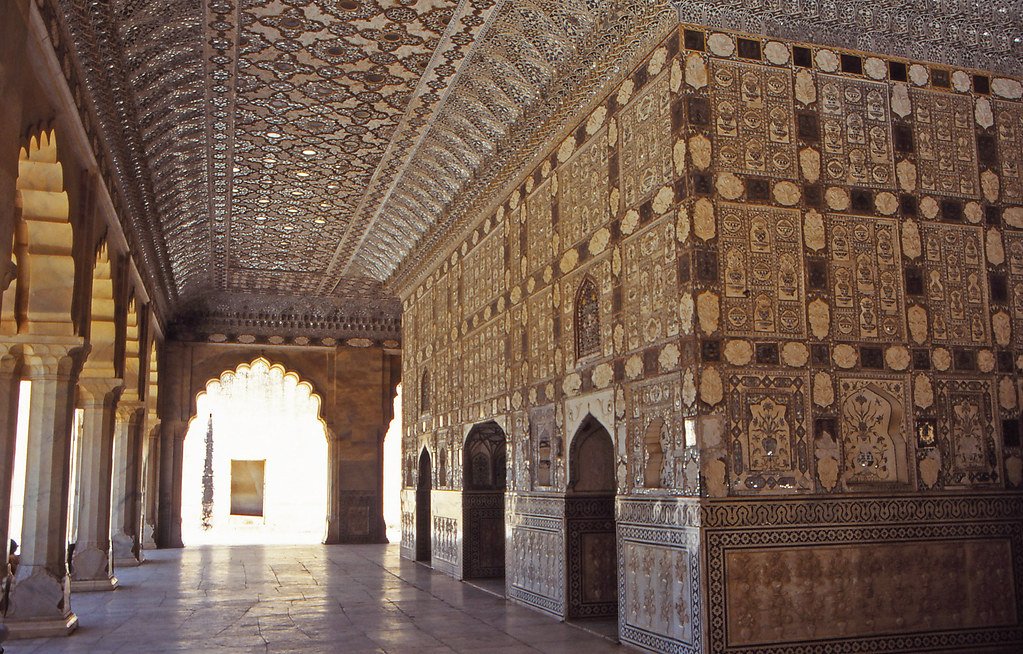
4. Ganesh Pol: The Ganesh Pol at Amber Fort is a magnificent gateway adorned with vibrant frescoes and intricate carvings. Named after Lord Ganesha, the remover of obstacles, the gate served as the royal entrance to the private palaces. Its artistic blend of Mughal and Rajput styles features stunning floral motifs and detailed latticework. The Ganesh Pol’s highlight is the depiction of Lord Ganesha at the top, symbolizing prosperity and good fortune, making it a central architectural marvel within the fort.
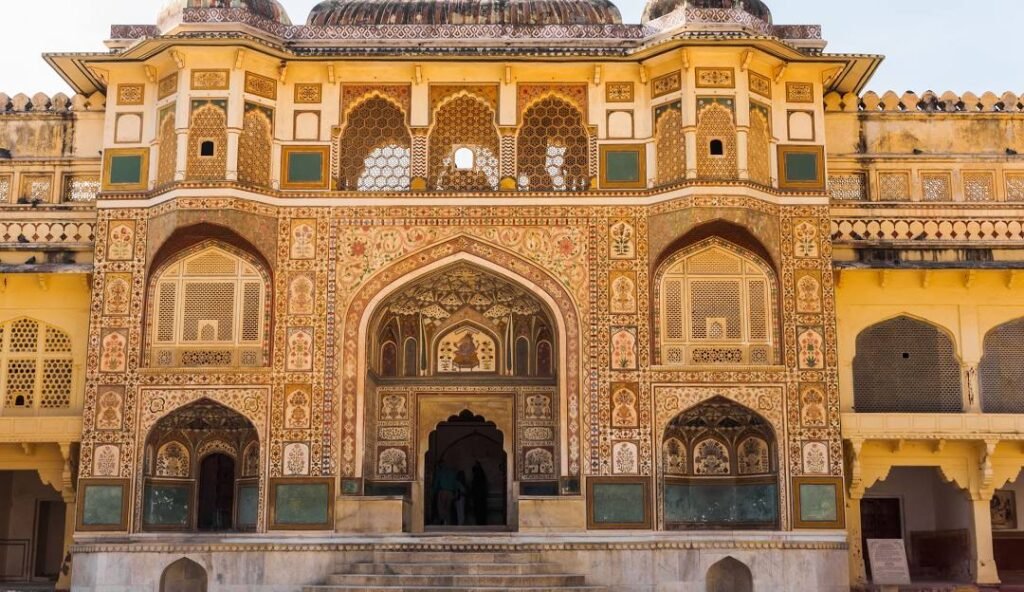
5. Sukh Niwas (Hall of Pleasure): The Sukh Niwas (Hall of Pleasure) in Amber Fort is a remarkable chamber designed to provide a cool and comfortable retreat for the royal family. Ingeniously built, it features a unique cooling system where water flows through marble channels, creating an air-conditioned effect with the help of natural breezes. Adorned with intricate carvings and floral motifs, the hall reflects the luxurious lifestyle of Rajasthan’s royalty. Sukh Niwas served as a tranquil space for leisure and relaxation amidst the grandeur of the fort.
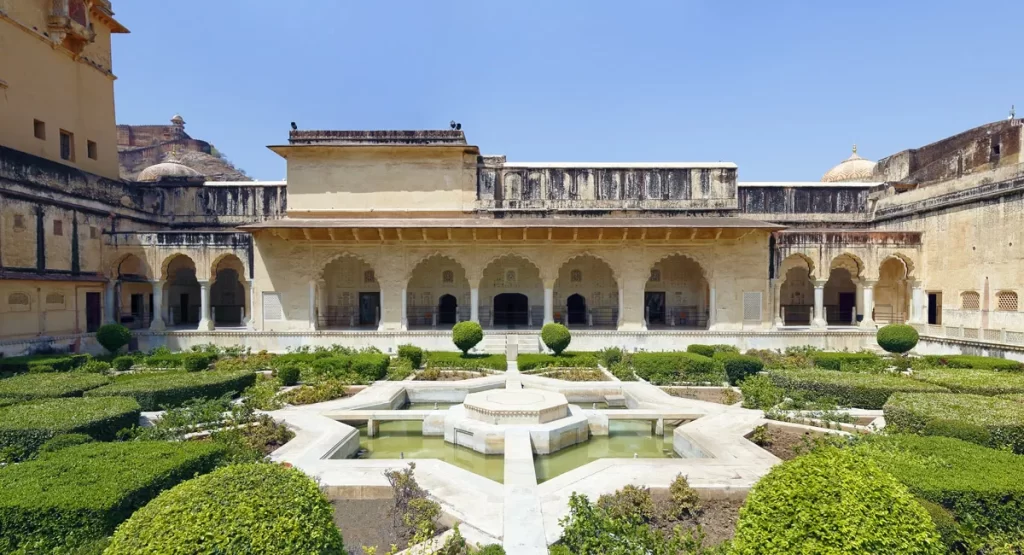
6. Zenana (Women’s Quarters): The Zenana (Women’s Quarters) at Amber Fort served as a private and secure area for royal women, reflecting the traditions of privacy and seclusion in Rajput culture. Designed with intricate carvings and interconnected rooms, it provided a luxurious and comfortable living space. The central courtyard facilitated gatherings and activities while ensuring privacy from male visitors. Each queen or consort had separate quarters, showcasing attention to detail and hierarchy within the royal household. The Zenana epitomized elegance and thoughtful architectural design.
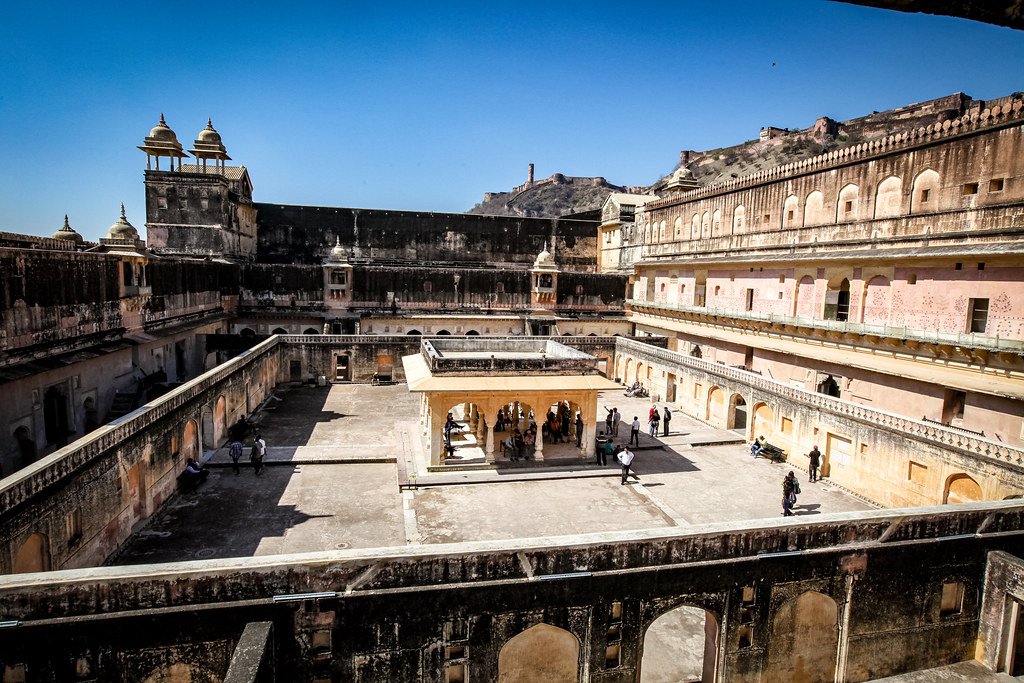
Places to Visit Near Amber Fort
The area surrounding Amber Fort is rich in history and attractions:
- Jaigarh Fort: Located nearby, this fort is home to the world’s largest cannon on wheels, Jaivana.
- Nahargarh Fort: Offering panoramic views of Jaipur, this fort is a popular spot for sunset lovers.
- Jal Mahal: Situated in the middle of Man Sagar Lake, this “Water Palace” is a serene getaway.
- Anokhi Museum of Hand Printing: Celebrating Jaipur’s textile heritage, this museum is a short distance from Amber Fort.
- Stepwells: The historic Panna Meena Ka Kund, a stepwell, is an architectural gem near the fort.
Places to Visit Near Amber Fort
1. Entry Fee:
- Indian tourists: ₹100
- Foreign tourists: ₹500
- Students (with ID): ₹50
2. Light and Sound Show Fee:
- English Show: ₹295
- Hindi Show: ₹195
3. Elephant Ride (Optional): ₹1,100 (two people per elephant, subject to availability).
Amber Fort Light and Sound Show
The Light and Sound Show at Amber Fort is an enchanting way to learn about its history. It uses stunning visuals, music, and narration to bring the fort’s rich past to life.
Timings:
- Hindi: 7:30 PM
- English: 8:30 PM
The show is a captivating experience, set against the backdrop of the illuminated fort and its surroundings.
Best Time to Visit Amber Fort
The best time to visit Amber Fort is during the winter months from October to March, when the weather is pleasant for exploring. Summers in Jaipur can be scorching, with temperatures soaring above 40°C, while monsoons bring occasional rains that may hinder sightseeing.
Visiting in the early morning or late afternoon offers cooler temperatures and less crowded conditions.
Tips for Visiting Amber Fort
- Wear Comfortable Shoes: The fort involves a lot of walking and climbing stairs.
- Carry Water: Staying hydrated is essential, especially during warmer months.
- Hire a Guide: A knowledgeable guide can enhance your experience with fascinating historical insights.
- Arrive Early: Beat the crowds by visiting early in the day.
- Photography: The fort offers excellent photo opportunities, so don’t forget your camera.
- Ethical Elephant Rides: If considering an elephant ride, research ethical concerns and alternatives.
Location Map for Amber Fort Jaipur
Amber Fort is situated on the Delhi-Jaipur Highway (NH11C) in Amer, Rajasthan. It is easily accessible via GPS-enabled apps, ensuring smooth navigation.
Frequently Asked Questions
1: Is Amber Fort the same as the Amer Fort?
Yes, Amber Fort and Amer Fort refer to the same monument. “Amber” is an anglicized version of “Amer,” the name of the town where the fort is located.
2: How much time does Amer Fort take?
Exploring the fort thoroughly takes about 2-3 hours, depending on your interest in the history and architecture.
3: Who built the Amer Fort in Jaipur?
The construction of Amer Fort was initiated by Raja Man Singh I in 1592 and later expanded by his successors, including Jai Singh I.
Conclusion
Amber Fort is more than just an architectural wonder; it’s a journey through Rajasthan’s royal legacy. From its intricate designs and historic significance to nearby attractions and engaging activities, the fort offers an unforgettable experience for history buffs, architecture enthusiasts, and travelers alike.
Plan your visit to this incredible monument and immerse yourself in the grandeur of Rajasthan’s golden era.

